OATMAN (Day 8 - part 1)
After a hotel breakfast, we popped back over the border into Arizona. Our destination wasn't too far... but it was definitely remote!
The town of Oatman was founded around 1906. By 1931, the area's 50 mines had produced over 1.8 million ounces of gold. The town's population was over 10,000 (it's closer to 100 today). By the mid-30's, the boom was over and the last remaining mines were closed in 1942 as nonessential to the war effort.
Built on the original road through the Black Mountains, Oatman eventually became part of the original Route 66. This enabled its rebirth as a tourist town in the late 1960's and 70's.

Path of the original Route 66

Heading out into the hills

The Black Mountains run about 75 miles north-south. The highest peak is just under 5,500 feet.


It isn't the town, per se, that is the main tourist attraction... it's the wild burros that roam freely about.


Hey! Get your asses out of the street!
What's the difference between a mule, a burro, an ass and a donkey?
A donkey, a burro and an ass are all exactly the same thing. Originating in Africa, the wild ass was domesticated around 4000 BC. They arrived in the Americas along with Christopher Columbus in 1495. Sometime in the 1700's, for reasons that aren't very clear, the word donkey gradually replaced ass, with a jack being a male and a jenny (or jennet) being a female. Burro is just the Spanish word for the animal.
A mule, however, is produced when you breed a male donkey to a female horse. A hinny is produced when you breed a male horse to a female donkey. Mules possess characteristics of both of their parents but are sterile and unable to reproduce. You can't breed two mules to get a mule; you must breed a horse to a donkey to get a mule.
Donkeys have long ears, flatter backs, smaller hooves, coarse and bristly manes and thin tails. They are shorter and generally hardier than horses. Mules tend to be larger than donkeys with more delicate bone structure.

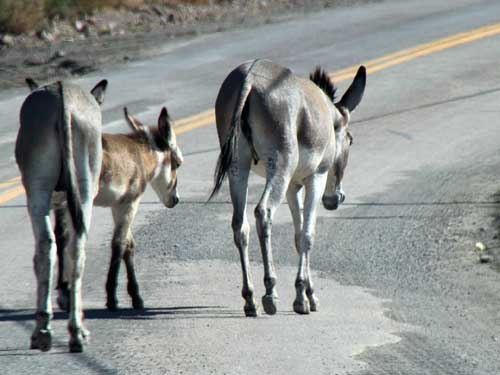
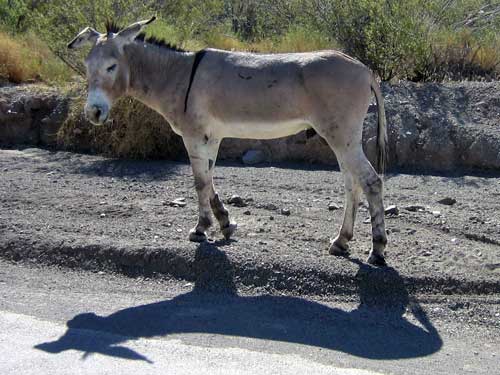

A bit of morning drama
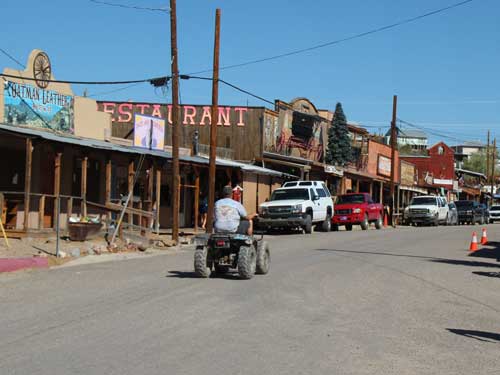
"Downtown" Oatman

Burros first arrived in Oatman with the early prospectors. The animals would haul rock and ore inside the mines and water and supplies outside. Since these miners would often go for long periods of time without seeing another living soul, their mule became a trusted friend, one who was loyal, hard working, intelligent, strong, hardy and even lovable. The miner frequently shared his food and in return the mule ensured the miner's survival. As the mines closed and people moved away, the burros were released into the surrounding hills where they became wild.



Um... donkey leather??

The Olive Oatman restaurant
Olive Oatman was born in 1837 in Illinois. When she was 13, her family (parents and 6 siblings, ranging from 17 to 1 year old) joined a Mormon wagon train to California. Dissension caused the group to split up near Santa Fe, with the Oatmans and several other families choosing the southern route. In Arizona, they were warned that the trail ahead was dangerous but the Oatmans continued on alone. They were promptly attacked by a group of Native Americans who slaughtered all except for Olive (age 14 now) and Mary Ann (age 7) who were taken as slaves. Their brother Lorenzo (age 15) had been badly beaten and left for dead but somehow survived. The girls were made to forage for food, haul water and firewood and do other menial tasks; they were frequently beaten and mistreated. After a year, they were sold to a group of passing Mohave.
This is where the story differs, depending what you read. One tells of the girls being branded with blue cactus tattoos to proclaim their status of slaves and of abuse and the constant fear of death. Olive had to watch other captives being tortured and Mary eventually died of starvation. The other story, most of which comes from Olive herself, speaks kindly of the Mohaves. Her tattoos symbolized she was one of the tribe; she was given a clan name and purposely hid from passing white travelers, and in reality, many natives died of starvation during a drought along with Mary.
In the end, Olive was finally returned to white society and reunited with Lorenzo, five years after her capture. She later married, adopted a daughter and eventually died of a heart attack at the age of 65. The town was named in her honor.

Olive Ann Oatman (1837 - 1903)
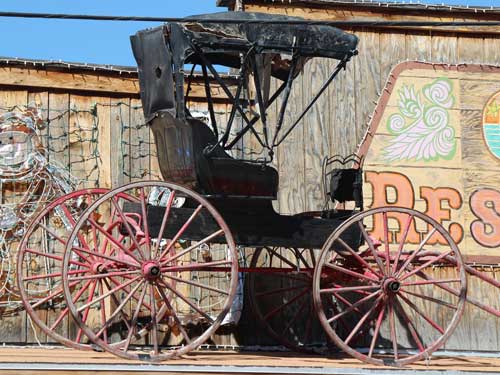

The boardwalk

Similar to the Medicine Man we'd met back at the New Mexico-Arizona state line, this Ol' Miner could also apparently tell you your fortune.



A giant salt lick... that I'm assuming is for the burros.

Uh... exactly how serious are they? This is the Wild West, after all!
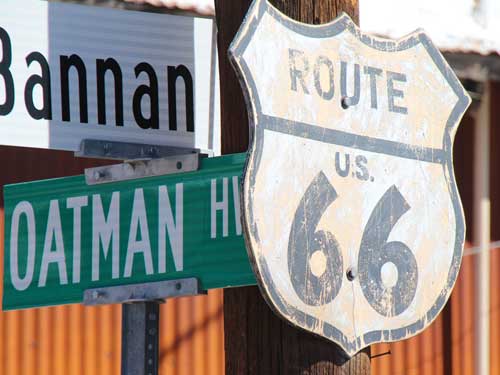



Originally named the Drulin Hotel, it changed names several times before becoming the Oatman Hotel in the 1960's. It is rumored that Clark Gable and Carole Lombard spent their wedding night here in 1939 after having been married in nearby Kingman.

Darn, we were going to miss this...

... however it was already 98 degrees at 9 am!

The tall, false building fronts were a way to make hastily built towns look more like the established commercial buildings back East. In some cases, they not only made the buildings look more impressive, they also helped hide the view of the surrounding area that reminded residents they were not back home.

What exactly is this sign trying to say? It it an artistic word for 'bite' such as "The angry rattlesnake knifes an old miner in the leg"? Or if they meant 'knives', then knives made FROM rattlesnakes, knives to be used AGAINST rattlesnakes, or knives made FOR rattlesnakes (even though they don't have hands)? I'm so confused.

As we started to leave, mobs began to flow from giant tour busses.

Whatever this one was, it was big!
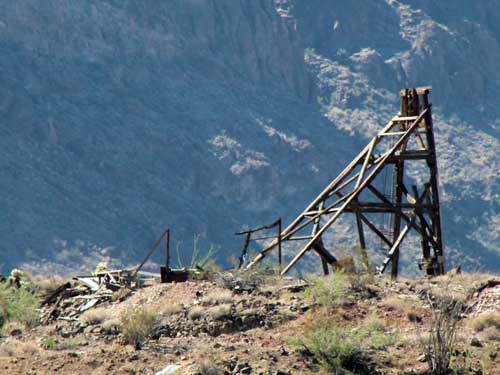
Old headframes (the structural frame above an underground mine shaft) such as this one once covered the hillsides...

... Oatman, 1921

Leaving the Black Mountains
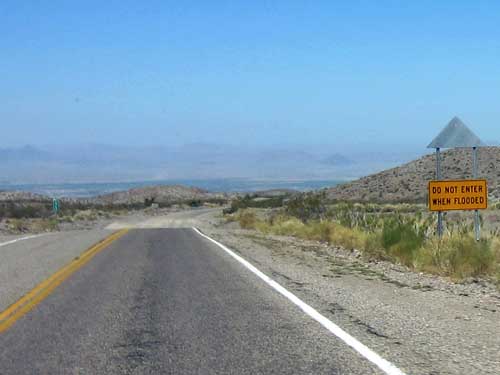

return • continue

